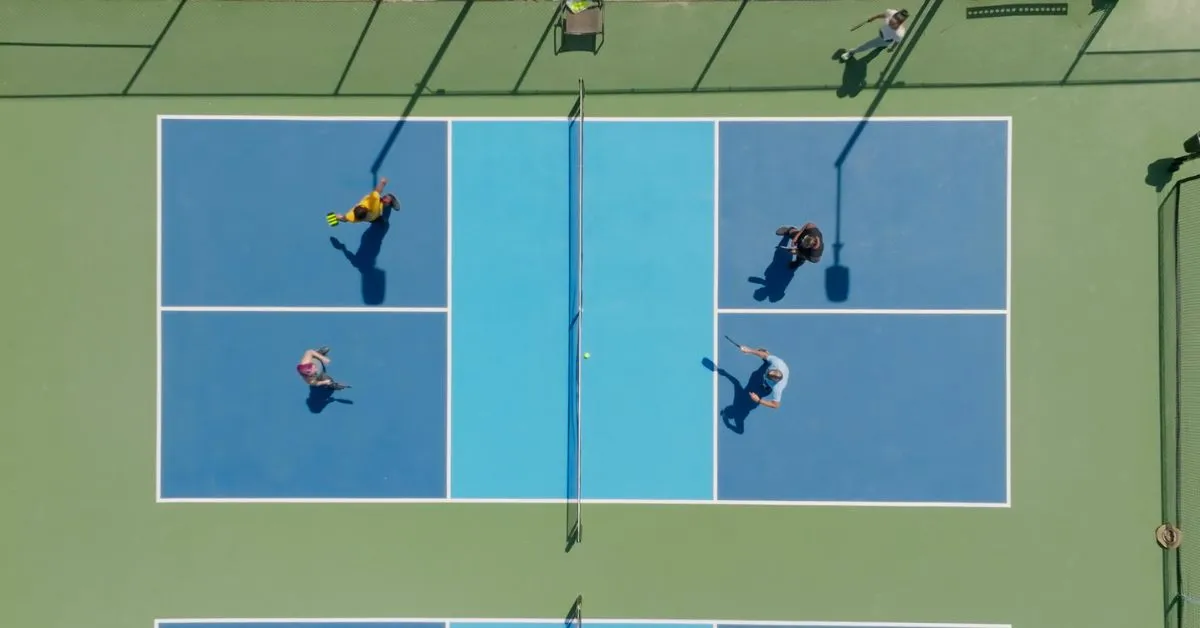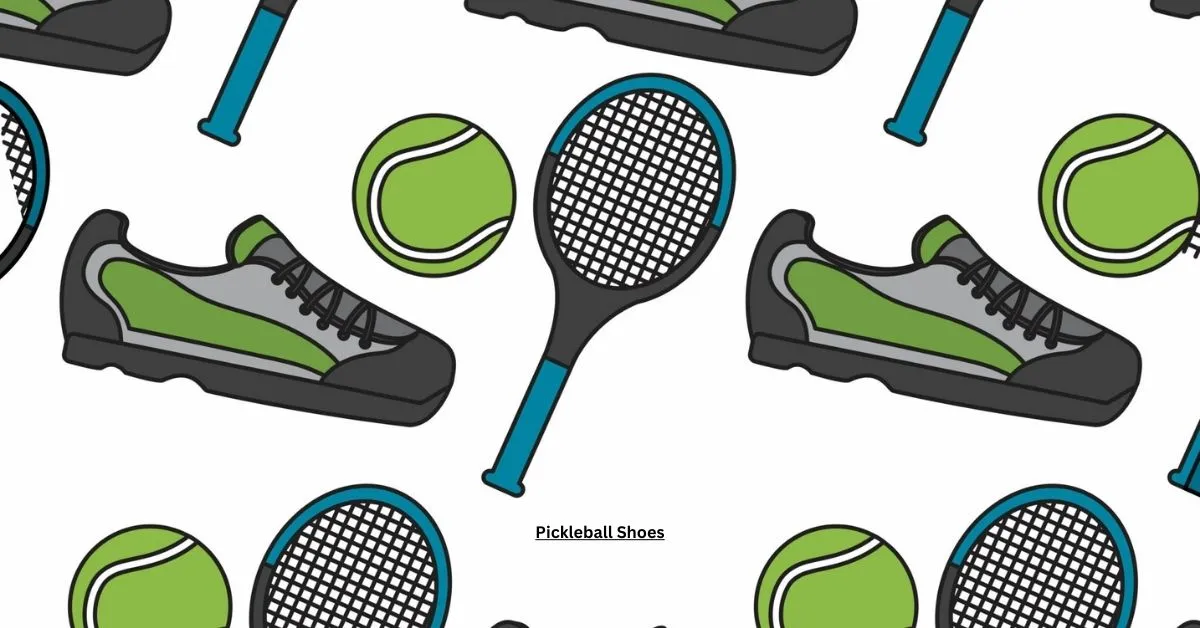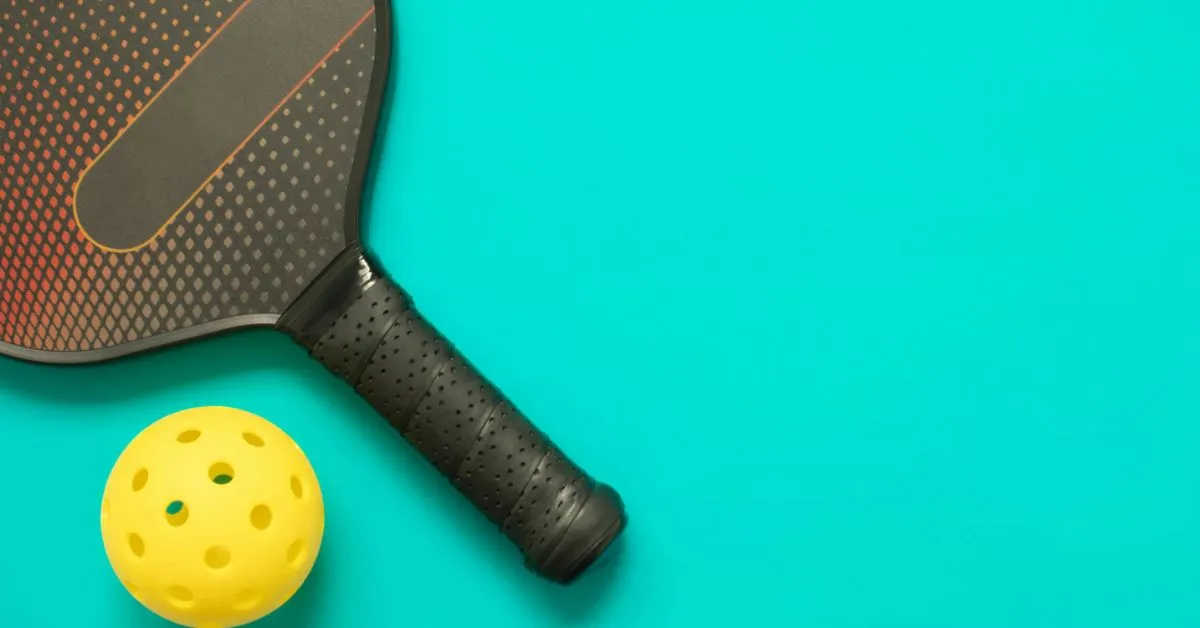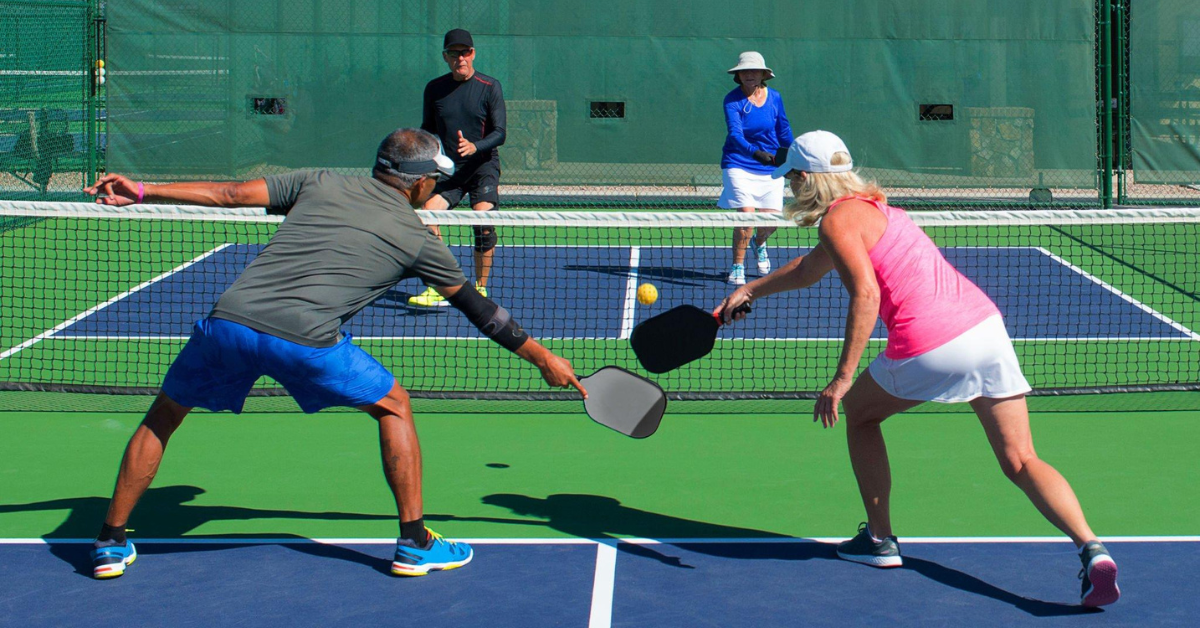Before you step onto the Pickleball court for a doubles match, consider the untapped potential that lies within strategic mastery. The art of wielding a paddle becomes an exhilarating dance, and the nuances of effective teamwork can elevate your game to new heights. In the realm of Pickleball, the term Pickleball Strategies isn’t just a buzzword; it’s the key to unlocking a winning formula.
After all, it’s not merely about slamming the ball over the net; it’s about precision, communication, and anticipating your opponents’ every move. Imagine the court as your strategic canvas, and every stroke of your paddle as a calculated brushstroke. The difference between a good and a great game often lies in those who understand and implement the right strategies.
But fret not, as this blog is your bridge to success in the world of Pickleball doubles. We delve into the tactical intricacies, providing you with five game-changing tips that transcend the ordinary. From positioning tactics to communication strategies, we’re here to guide you through a transformational journey where synergy and skill converge.
So, let’s traverse this bridge together, from the realm of casual play to the pinnacle of strategic prowess. Are you ready to embrace the world of Pickleball Strategies and revolutionize your doubles game in 2024? The court awaits, and your path to mastery begins now.
Advanced Pickleball Doubles Strategy
Here are the following pickleball strategies for double that I have learned after doing a lot of research.
To enter the non-volley line, follow the return of serve
You know you must return the favor when the serving team serves the ball to you. You can now go on the offensive and limit the choices of the opposing team by setting up just behind the kitchen line.
Access to the non-volley line is the first tip of the pickleball doubles strategy game. To increase your chances of winning the rally with this positioning, follow every returning service to the non-volley line because it is so important. In the middle of the court, communicate when returning shots.
If you and your partner are positioned just 7 feet from the net instead of 22 feet back, it is way easier to win rallies and points.
This also makes it simpler to hit down, which is usually the final shot, especially when the other team is stranded at the side of the court. In the doubles pickleball strategy, serving the receiver’s weaker side is essential to gain an advantage and pressure the opposing team.
Read more about Return Serve at: 8 Pickleball Serve Return Tips For Winning Shots
Dunk on opponent’s feet
No matter where your opponents are on the court, hitting the ball toward their feet is always a brilliant idea.
Returning a ball at the foot without bouncing it up is challenging. If you’re playing against them, you should dunk at their feet. If your opponent is in the space between the baseline and the non-volley zone line, you should hit the ball toward their feet.
If they are close to the baseline, hit the ball toward their feet. Following this straightforward plan will improve your growth as a doubles pickleball player. Keeping the ball in play can be a key strategy in pickleball doubles.
Keep your backswing to a minimum if possible because placement is usually more important than power. Massive backswings take longer to bring your paddle back to the ready position and are simpler for your opponent to read.
Stay Behind Your Opponents
This advanced pickleball strategy double approach is related to the above technique.
One effective strategy for a hand player in pickleball double is to position yourself for the best pickleball court position, but you also want to try to stop your opposite team from doing the same.
Your opponents will benefit from being at the non-volley line just as much as you do since they will be there, too, if they succeed. The serving team must complete a longer and more difficult third shot.
For this reason, you must try to pin your opponents at the back of the court for as long as you can. Since your opponents must make difficult shots for the duration of the rally, your doubles team has a better opportunity of making fantastic shots.
Add a drop shot in-game
To be a top-tier pickleball player, you must learn how to master the drop shot. The effort is well worth it because your opponents won’t know what hit them once you have got it.
Just after the two-bounce rule has been followed, which happens on the third shot, it is one of the most frequent times to hit a drop shot. Because of this, drop shots are sometimes referred to as third-shot drops. Players frequently attempt a drive on their third stroke before using the drop on their fifth.
Hence, focus on your dinks before practicing your drop shot. Until you can successfully drop your shot into the kitchen from the baseline, start with dinks at the kitchen line. Once you’ve mastered it, you can try hitting drop shots off of serve returns during matches or whenever you want to enter the kitchen line.
Read More about Drop Shots at
Top Drills For A Winning Drop Shot In Pickleball In 2023
Avoid towing the baseline when returning serves
If your team wins the coin toss and chooses to serve, Aim for a deep serve that lands near the baseline. This will make it harder for the receiving team to attack your serve.
In pickleball, everyone enjoys being first to the kitchen line, but often this energy can get the better of you on serve returns. It may be hard to return if you begin with your feet too near to the baseline.
For serve returns, proper placement is key. Naturally, the serve must bounce before you can return it, but if you approach the baseline too closely when serving back, there will probably be no space between you and the ball. Running forward will be far simpler than pulling yourself back for those deep serves if you maintain your distance, though.
Hence, if you crowd the baseline, step back at least two feet the next time you expect a serve. You can even move back three feet to give yourself more space if you know your opponent has a powerful serve.
The only exception is if you know that your opponent will serve short; you can usually expect this based on what you know about them from previous matches, such as their tendency for serving deep or a combination of that, plus their inability to vary serving depth.
You can also read in detail about: Advanced Pickleball Doubles Strategy
Net Play Strategies for Doubles
Approaching the net is a key pickleball strategy in doubles play. Mastering net play allows you to take control of points and apply pressure on your opponents. Here are some top tips for effective net play in pickleball doubles.
Approaching the Net Confidently to Control the Game
- Move up decisively after serves and returns. This allows you to immediately attack weak shots.
- Use the two-bounce rule to get to the non-volley zone quickly.
- Poach across the middle when you see opportunities to put shots away.
- Have active hands and feet at the net to react to shots.
- Cover the middle of the court first rather than the sidelines.
Strategies for Effective Volley and Smashing Techniques
- Use punch volleys to keep shots low and hard to return.
- Look to cut off angles with sharp cross-court volleys.
- Smash down-the-line to open up the court.
- Disguise smashes by using the same toss and swing.
- Hit volley winners to open court areas.
- Look to smash overheads straight ahead when possible.
Communication between Net Players for Quick Reactions
- Make eye contact and gestures to signal your intentions.
- Call “Yours!” loudly when letting your partner take a shot.
- Switch positions smoothly by talking to each other.
- Discuss poaching plans before points start.
- Stay positive and encouraging with your communication.
- Celebrate and compliment your partner’s good net play.
By mastering these net play strategies and techniques, you’ll boost your control of points and apply much more pressure in pickleball doubles matches. Approaching the net decisively and working together with your partner are keys to winning more games.
Serve and Return Strategies
The serve and return play a crucial role in dictating the flow of pickleball doubles points. Mastering these foundational shots allows teams to seize control early in rallies.
The Significance of a Strong Serve in Doubles Pickleball
- Vary placement to target opponent weaknesses. Mix up serves to the forehand and backhand.
- Use spin on the serve to move opponents out of position. Topspin and sidespin serves can be effective.
- Serve deep to push opponents back and open the court. Shorter serves can also catch them off guard.
- Make sure to consistently clear the non-volley zone with legal serves.
Return Strategies to Put Pressure on Opponents
- Look to return aggressively with depth and pace. This pins opponents back.
- Return down-the-line to move serving team players out of position.
- Vary return placement to keep opponents guessing.
- Block soft returns back low over the net to initiate rallies.
Coordinating with Your Partner for Efficient Serves and Returns
- Communicate before points on serve strategy and return formations.
- Server’s partner should move up towards non-volley zone in anticipation.
- Returner’s partner should reposition to cover weaknesses.
- Shift positions smoothly after serve and return.
- Discuss adjustments between points if necessary.
Strong fundamentals in the serve and return will gain teams an early edge in points. Mastering control and placements while coordinating with your doubles partner is vital for executing sound pickleball strategy.
Top Pickleball Spin Serves | Legal Or Illegal In 2023
Common Challenges and How to Overcome Them
No matter your skill level, pickleball doubles teams will inevitably face challenges during matches. Being aware of these common difficulties and having plans to address them will help you better execute pickleball strategy.
Dealing with Opponent Tactics and Adjusting Strategies
- If opponents are poaching aggressively, use more lobs and dinks to counter.
- Against consistent baseliners, move forward as a team and take control of non-volley zone.
- With lob-heavy opponents, position one player deeper to handle lobs.
- When opponents hit down-the-line often, start cheating to protect the alley.
Overcoming Communication Barriers in a Noisy Environment
- Use hand signals like the fingers to indicate planned shots.
- Reduce confusion by discussing plans clearly before points.
- Make eye contact frequently to stay on the same page.
- Keep verbal communication as simple and loud as possible.
Adapting Strategies Based on Changing Game Dynamics
- As you identify opponent weaknesses, modify strategies to apply more pressure there.
- If your game plan isn’t working, call a timeout to regroup and adjust.
- Be ready to switch tactics and positions quickly in response to opponents’ shots.
- Constantly communicate with partner to ensure you both recognize necessary adjustments.
Remaining flexible, communicating clearly, and collaborating with your partner are key to overcoming any challenges during a pickleball doubles match.
8 Common Mistakes In Pickleball Serve | How To Avoid Them
Final Thoughts
Employing effective doubles strategies is crucial for success in pickleball. By mastering skills like serve and return fundamentals, approaching the net decisively, controlling the kitchen through strategic positioning, and collaborating closely with your partner, you can execute high-level play.
Communication, flexibility, and court coverage are all vital. With the right strategies and practice with your partner, you can control points and matches. Mastering pickleball doubles strategy requires an understanding of court positioning, net play, and how to combine skills with your teammate. Dedicate time to drilling the key tactics and you will see your pickleball doubles game improve dramatically.





